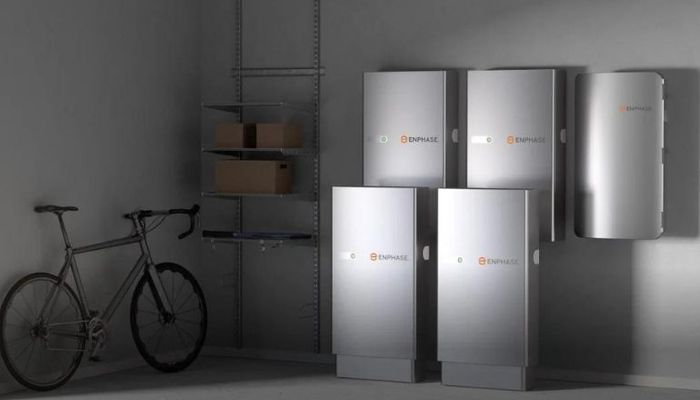Solar Industry Trends: Experts Share Their Predictions

It’s no secret that the solar industry is experiencing significant growth as solar technology continues to advance and gain widespread adoption.
In this update, we’ll hear from solar industry experts on some of the biggest trends taking shape this year. A major theme emerging is the increasing prominence of batteries, with a focus on new battery chemistries, demand load management strategies, and the evolution of electric vehicles serving as a backup power source.
Let’s dive into these exciting developments and explore their potential impact on the solar industry.
Battery-Based Systems
Solar battery-based systems are gaining significant attention lately, largely due to attractive benefits like protection during outages and storms, lower electric bills and the potential for complete energy independence. But how is the rise in backup power changing the industry dynamic as a whole?
“You’re going to see a lot of batteries getting deployed. Attachment rates are going to go through the roof,” says Alex Lepore, a sales manager at Fortress Power, a global manufacturer of lithium iron batteries for solar. “More people now trust the technology.”
The growing interest in backup power is especially apparent in states like California, where solar adoption is already high, and changing regulations like NEM 3.0 have made backup power more of a necessity, rather than just a luxury.
The cost of backup power is also decreasing, making battery storage more accessible for solar owners and potential buyers.

Battery Chemistry
Currently, lithium-iron batteries are the most popular type of solar battery due to their extended lifespan and low maintenance requirements. However, new battery technology is on the horizon.
“I’m excited for new iterations of battery chemistry,” says Lepore. “I’m eager to see how we can use technology to make batteries more efficient or cost-effective.”
One example he mentions is saltwater batteries, which use a saltwater solution to capture and store energy. Saltwater batteries are considered safer, longer-lasting, and more environmentally friendly than other battery types.
Another emerging battery type is lithium-titanate — an evolved form of the lithium-ion battery with a different chemical mix that’s known for its fast-charging capabilities and long lifespan.
It's worth noting that it can take anywhere from five to ten years for new batteries to become mainstream, particularly if they haven't been tested or proven for reliability. So while battery development is a long game, the future looks promising.
Demand Load Management
Demand load management is an essential strategy for solar system owners looking to optimize performance and maximize energy savings.
Jeff Spies, a NABCEP (North American Board of Certified Energy Practitioners) board member and president of Planet Plan Sets, discusses how demand load management puts more power in the hands of consumers.
“With demand load control, solar owners can turn off high-consumption loads like hot water heaters, washers, dryers, dishwashers, electric ranges, or swimming pools while operating on backup power. This optimizes the performance of their energy storage system, making it even more practical and functional for consumers.”
Spies also adds that demand load control goes beyond simply turning loads on and off. This feature will be key as whole home energy management devices become the norm for solar owners over the next few years.
Comprehensive Consumer Control
As whole home energy management gains momentum, solar owners will soon be able to leverage smart technology to manage energy usage and consumption with a single, user-friendly solution.
Spies envisions that whole home energy management devices will employ a high level of integration. Consumers will be able to optimize their loads — even during a power outage.
Spencer Rosen, a regional sales manager for Enphase Energy, is equally excited about the possibilities of the whole home energy management.
“Imagine a seamless, all-in-one system where smart technology integrates with your solar ecosystem. I love the possibility of having a platform where everything works together to optimize energy efficiency. Having the ability to control your energy usage from the palm of your hand is convenient and will make your life easier.”
Smart EV Chargers
Rosen also mentioned the potential for electric vehicle (EV) integration with home solar systems.
Essentially, homeowners can use their electric vehicles to store excess energy during the day, then draw from that source to power their home at night, therefore turning the EV’s battery into a backup power source.
There is a caveat, though. Rosen acknowledges that “full implementation of this integration may take at least a year or two, as it requires agreements between auto manufacturers, utilities, and integrators (like Enphase Energy) to validate warranties and ensure proper connections.”
In addition to using EVs to store excess solar energy, Rosen also highlighted the potential for homeowners to export energy from their EVs to the grid during peak periods. Likewise, this process would require validation from utility grid operators to ensure that the system is properly connected and homeowners are compensated for the energy they export.
Overall, Rosen is excited for the possibility of integrating smart EV chargers with the home to further enhance the power of solar panel systems.
Closing Thoughts
It’s clear that the solar industry is evolving rapidly, with all eyes on batteries and backup power solutions.
While some of these developments (like whole home management devices or smart EV charging) may take a few more years to become mainstream, these solar industry trends and predictions offer a glimpse of what's to come, suggesting a bright future for solar and batteries.






